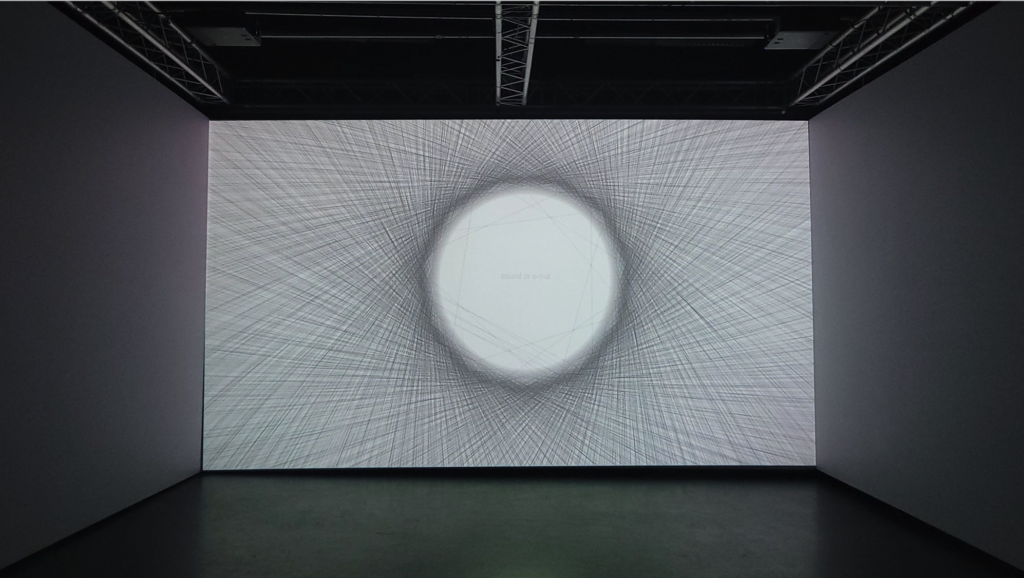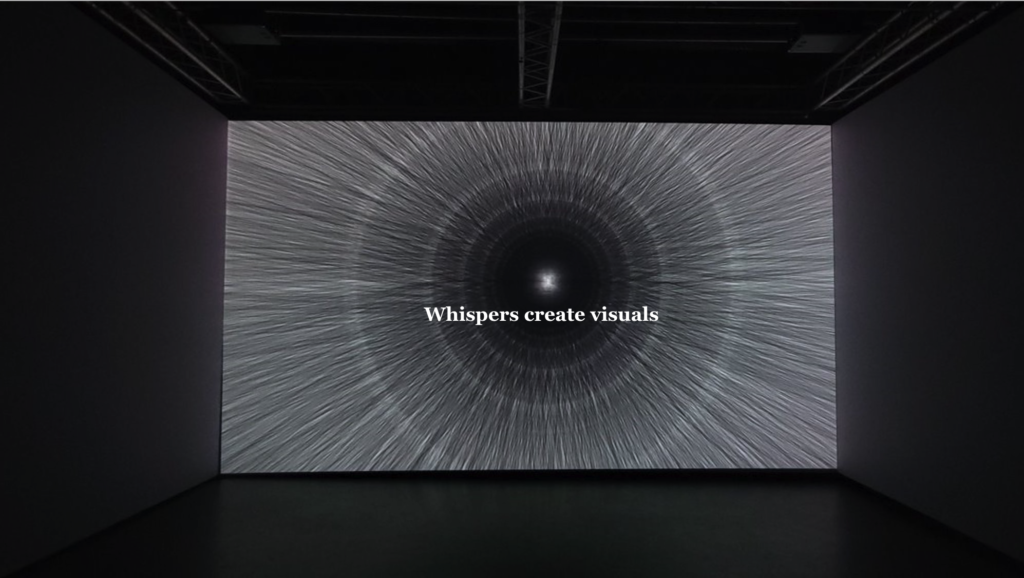
the end is an interactive installation where the participant’s whisper secrets in front of a plinth, and the sound waves from their voice create a generative drawing in front of them. Their whispers unfold a path to nowhere that cannot be repeated ever again, and that exists only as they speak. No secrets are heard out loud, only a combination of oscillators that fill the space.
HARDWARES & SOFTWARES
Visual Studio Code (JavaScript code), microphones, Laser Projectors
SUPPORT
Supported and powered by Goldsmiths University of London.



ABOUT
the end is a visual experience where sound generates an accumulation of dots, so that over time repetition creates meaning. The participant needs to produce sound in order for the image to unfold, and if their efforts are not enough, the process stops and reveals a white background. The loop, seemingly random at first, initially creates a path to nowhere. After that, the process of unfolding repeats 200 times, and the watcher doesn’t know when or if another path can be seen again.
This project was inspired by the function Perlin Noise created by Ken Perlin, for being a way to create constrained randomness within a drawing. With this work, my intention is to pass the idea that without sufficient volume, without a voice, or without active participation, there is no path to follow. Even if one does engage, the randomness doesn’t allow the human to be in control of what is created. Furthermore, I’d like to evoke a sense of frustration that if the action is not enough, the entire drawing dissolves and erases the message built until that moment.
I got inspired by pop references, especially the movie Coraline by Henry Selick (2009) and the documentary The Loneliest Whale: The Search for 52 by Joshua Zeman (2021). The first is an animation about a girl that discovers a parallel universe through a path inside her own house, where reality is backwards. This path was a visual and poetic inspiration, in terms of how it unrolls “out of nowhere”, and how it allows the character to teleport, which connects to my research on translation mentioned above. The documentary shares the real story of a whale who sings in a unique pitch that can’t be heard by others, so she roams through the oceans alone for decades. In this work, the viewer becomes the whale, navigating through the canvas with their noise and creating meaning in a digital world through sound.
Accessibility is indispensable in my work, so alternatively, the viewer can generate sound by pressing e-n-d keys. As an alternative to describing the image for those who can’t see, the oscillator pitches give a sense of what unfolds on the screen.
The idea for this project was to create the simplest interactive space possible – no fancy gadgets, motion tracking, sensors… Just code and humans. The code is open source. You can try the sketch below: